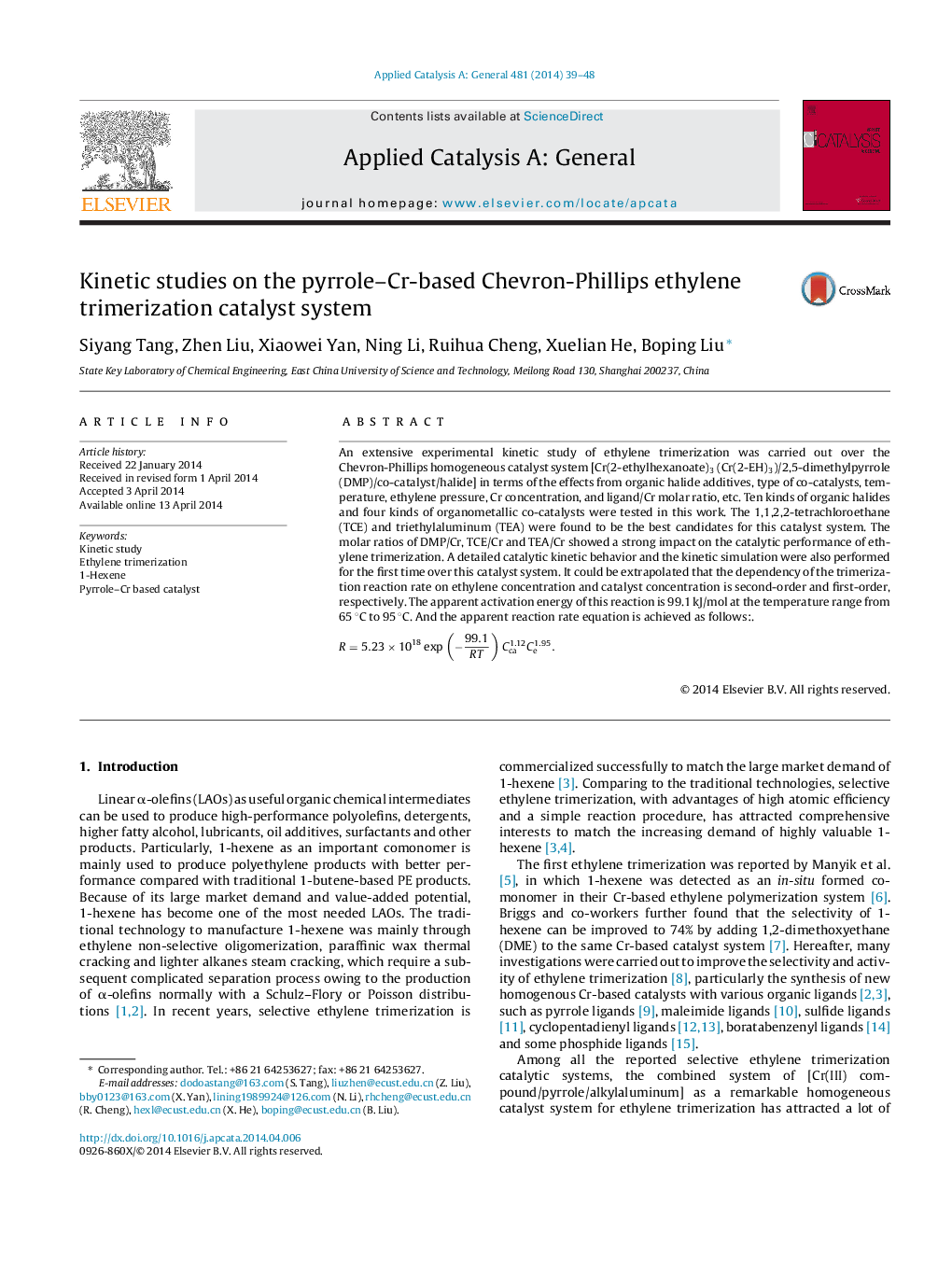| Article ID | Journal | Published Year | Pages | File Type |
|---|---|---|---|---|
| 39874 | Applied Catalysis A: General | 2014 | 10 Pages |
•Kinetic studies on the Chevron-Phillips ethylene trimerization catalyst system.•The 1st order reaction dependency to catalyst concentration.•The 2nd order reaction dependency to ethylene concentration.•Experimentally derived average activation energy of 99.1 kJ/mol from 65 to 95 °C.•The apparent reaction rate equation is R=5.23×1018exp−99.1/RTCca1.12Ce1.95..
An extensive experimental kinetic study of ethylene trimerization was carried out over the Chevron-Phillips homogeneous catalyst system [Cr(2-ethylhexanoate)3 (Cr(2-EH)3)/2,5-dimethylpyrrole (DMP)/co-catalyst/halide] in terms of the effects from organic halide additives, type of co-catalysts, temperature, ethylene pressure, Cr concentration, and ligand/Cr molar ratio, etc. Ten kinds of organic halides and four kinds of organometallic co-catalysts were tested in this work. The 1,1,2,2-tetrachloroethane (TCE) and triethylaluminum (TEA) were found to be the best candidates for this catalyst system. The molar ratios of DMP/Cr, TCE/Cr and TEA/Cr showed a strong impact on the catalytic performance of ethylene trimerization. A detailed catalytic kinetic behavior and the kinetic simulation were also performed for the first time over this catalyst system. It could be extrapolated that the dependency of the trimerization reaction rate on ethylene concentration and catalyst concentration is second-order and first-order, respectively. The apparent activation energy of this reaction is 99.1 kJ/mol at the temperature range from 65 °C to 95 °C. And the apparent reaction rate equation is achieved as follows:.R=5.23×1018exp−99.1RTCca1.12Ce1.95.
Graphical abstractFigure optionsDownload full-size imageDownload high-quality image (165 K)Download as PowerPoint slide
